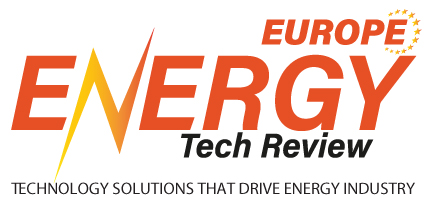 Jesper Steen, CEO
Jesper Steen, CEOWhat if that standard no longer applied? What if pipelines could be built from the start to withstand age, stress, and environmental pressures, cutting waste, conserving energy, and preventing unnecessary carbon emissions?
That’s the promise of Purapipe. It’s more than a material innovation; it’s a new way of thinking about infrastructure. By redefining durability and efficiency, Purapipe enables builders to move past outdated assumptions and create systems designed for lasting performance. With joint-free composite pipelines, the company transports water and energy securely, efficiently, and with minimal environmental impact.
Reinventing Pipeline Production
At the heart of the company’s innovation is a shift in how pipelines are made. Traditional systems are manufactured off-site, produced in sections, and assembled with joints that weaken over time. Each joint requires precise welding in outdoor environments, where conditions are rarely ideal. Because sections are joined every 11 to 12 meters, vulnerabilities accumulate over long distances. Once buried underground, these weaknesses remain hidden, making inspection and repair difficult.
Purapipe takes a different approach by producing pipelines continuously on-site using mobile production units that dramatically reduce joints, leaks, and repair needs. The fully automated process combines thermoplastic extrusion with filament winding of fiber reinforcement. Pipes can be tailored with two to four bonded layers, depending on performance requirements. A chemically resistant inner liner forms the foundation, reinforced by structural layers to withstand pressure, and is optionally complemented by a thermal insulation layer for specialized applications.
 Lamjed Kefi, Managing Director, Middle East
Lamjed Kefi, Managing Director, Middle East“Our solution redefines infrastructure economics. Traditional models demand heavy upfront spending to secure long-term efficiencies, but we eliminate that trade-off by lowering both project costs at the start and operating expenses throughout the pipeline’s life,” says Jesper Steen, CEO.
The benefits extend far beyond budgets or supply reliability. Water produced through energy-intensive treatment and desalination is wasted when pipelines leak, representing lost energy and unnecessary CO2 emissions. By cutting leakage at the source, Purapipe conserves water and delivers verifiable reductions in CO2 output, turning efficiency into a climate solution.
Our Solution Redefines Infrastructure Economics. Traditional Models Demand Heavy Upfront Spending To Secure Long Term Efficiencies, But We Eliminate That Trade-Off By Lowering Both Project Costs At The Start And Operating Expenses Throughout The Pipeline’s Life.
Adaptability, Compliance, and Monitoring
Efficiency on the ground must be matched by resilience over time, requiring infrastructure that adapts to local conditions, meets regulatory expectations, and provides ongoing visibility into operations. Purapipe achieves this through on-site production that adjusts pipelines in diameter, length, and curvature to fit terrain precisely. Compliance is embedded into the process to align with evolving safety and environmental standards, while monitoring tools track performance and extend asset life, demonstrating reliability under real conditions.
Once deployed, performance and safety remain priorities. Purapipe embeds fibre-optic sensing technology during production to monitor flow, pressure, temperature, and acoustic signals, providing continuous real-time monitoring and enables leak localization with remarkable accuracy. Partner technologies analyse this data in real time to distinguish real threats from false alarms. The multi-layered structure achieves full performance with only one-third of the wall thickness required by conventional polyethylene pipes. This reduces material consumption, lowers costs, and minimizes environmental impact throughout the pipeline’s lifecycle.
Reliable Performance for Diverse Infrastructure Needs
The technology is designed for both water and energy infrastructure, with a focus on multilayer construction. The inner layer must be compatible with the medium being transported. For potable water, polyethylene is commonly used, while oil and gas applications require advanced thermoplastics such as TPU, PEEK or other chemically resistant materials.
Beyond chemical compatibility, pipes must withstand specific pressures and temperatures for each application. Thickness adjustments and multilayer design allow higher pressure ratings, while optional insulation layers maintain temperature for chilled or heated fluids, such as in district heating or cooling systems.
Sustainability and Global Potential
Sustainability is central to Purapipe’s mission. Its solution aligns with UN Sustainable Development Goals for water access and climate action. By using proven materials like HDPE in new ways, the company can build large-diameter continuous pipelines without introducing untested substances, while still lowering the overall carbon footprint of infrastructure projects. Looking ahead, Purapipe’s technology can also transport hydrogen and CO2, making it highly relevant to the transition toward renewable energy.
“From 2025 to 2026, we are piloting our technology in the Middle East, Ireland and Europe, with a focus on gas, irrigation and water transmission. These programs will allow us to validate the concept under real-world conditions, gather critical data, refine costs, and open the door to broader applications in oil & gas, CO2 and hydrogen through collaboration with regional partners,” says Lamjed Kefi, Managing Director of the Middle East Region.
By the second half of 2026, the company aims to begin bidding for projects in the region, with plans for regional expansion and eventual entry into U.S. and European markets, and a long-term vision of establishing a truly global footprint.
As water becomes an increasingly valuable resource, Purapipe is redefining how it is managed and delivered. By eliminating weak points in pipeline systems, reducing capital and operational costs, cutting emissions, and minimizing disruption, the company offers a data-driven, intelligent approach to modern infrastructure. With its combination of innovation, efficiency, and sustainability, Purapipe aims to transform the way water, energy, and other essential resources move, while having the smallest possible impact on people and the planet.





